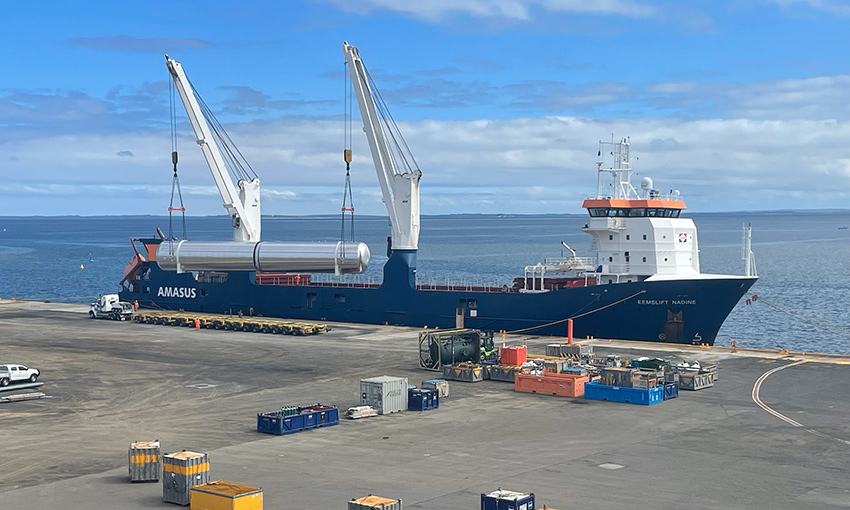BARRY Beach Marine Terminal is situated in an area of southern Victoria know for its natural beauty and wild coastline. The terminal is on Corner Inlet, which is just north of Wilsons Promontory, the southern-most point of continental Australia and a world-renowned national park. Incongruous surroundings for an important industrial marine site.
However, BBMT has been an important site for the Bass Strait offshore oil and gas industry for decades. And, as the hydrocarbons industry winds down in the area, it is set to be an important site for the development of offshore wind installations in the strait.
In early October, the port facilitated the visit of the 111-metre multipurpose vessel Eemslift Nadine, the first such visit the port has had in many years, but with the expected ramping up of offshore wind projects in the area, the vessel’s visit may be the first of many.
The cargo
Eemslift Nadine delivered two 145-tonne tanks and other heavy cargo destined for a new carbon dioxide facility being built by BOC for the Gippsland Basin Joint Venture, which is a 50-50 joint venture between Esso and Woodside Energy.
The new facility will be able to produce more than 60,000 tonnes of beverage-grade liquid carbon dioxide annually, which BOC says, will make it the largest carbon dioxide facility in the South Pacific. The company expects the facility to be operational in 2024.
Eemslift Nadine was the first vessel that wasn’t a regular visitor to the port since 2016 when the 120-metre BBC Africa arrived with a shipment of heavy materials for a power station rebuild project, according to Gippsland Ports Bevis Hayward. And before that, the 101-metre Jumbo Fairlift visited the port in 2014.
Preparing for the Eemslift Nadine
Mr Hayward told DCN the Port of Corner Inlet and Port Albert are not registered commercial Victorian ports. Corner Inlet is known as a local port under the Vic Port Management Act.
“Essentially and historically, Barry Beach Marine Terminal (BBMT), which is on Corner Inlet, has been the major operations base for the Gippsland Basin offshore oil and gas industry, operating since 1966. The BBMT facility is owned by Esso Australia and managed by Qube Energy,” Mr Hayward said.
“Currently four long-term offshore support vessels operate from BBMT. Each vessel is under the command of a master who holds an AMSA unlimited Master qualification and a local knowledge certificate issued for the port and various channels to BBMT.”
Mr Hayward said for the safe arrival and departure of special project ships into BBMT, a formal risk assessment is carried out which takes into consideration the vessel size, draft and its manoeuvring capabilities due to the restricted width and depth of the Barry Beach Channel and the terminal swing basin and berths.
“The arrivals of foreign-flagged ships with foreign crews require arrival and departure pilotage from port limits to BBMT,” he said.
“AMS Group (a registered pilotage service provider in Victoria and Queensland) expressed interest to supply a pilotage package for the arrival and departure of Eemslift Nadine. We embarked on a training regime to renew pilot licences for two Poseidon Sea Pilot members.”
Mr Hayward said Gippsland Ports also supplied a local knowledge training package for the issue of local knowledge certificates for two pilot launch masters and two tug masters.
“This combination of training and licencing provided the necessary qualifications and experience to provide the services required for the Eemslift Nadine and also for future special project ship visits,” he said.
“The pilot transfer service was provided by Poseidon and the towage service by Engage Marine on the tug Engage Rival.”
Mr Hayward said more larger ships are expected at BBMT in the near future.
“Now that we have again demonstrated the capability of the port and facilities to take special project ships on an occasional basis, Gippsland Ports expects further interest with at least one firming up currently,” he said.
This article appeared in the December 2023/January 2024 edition of DCN Magazine

